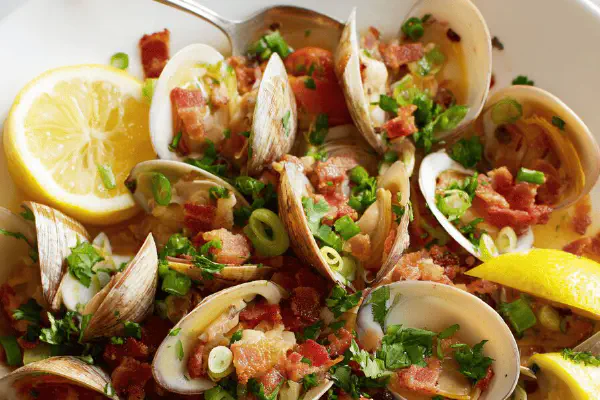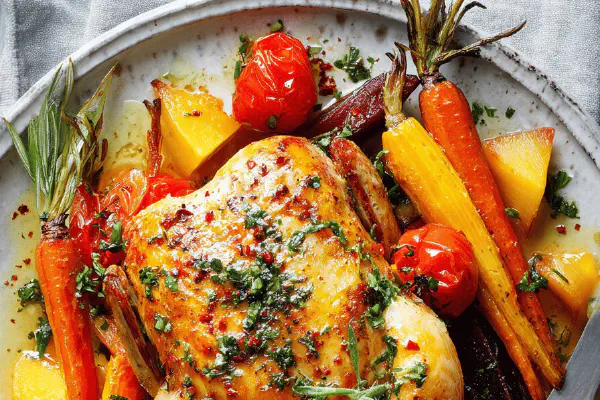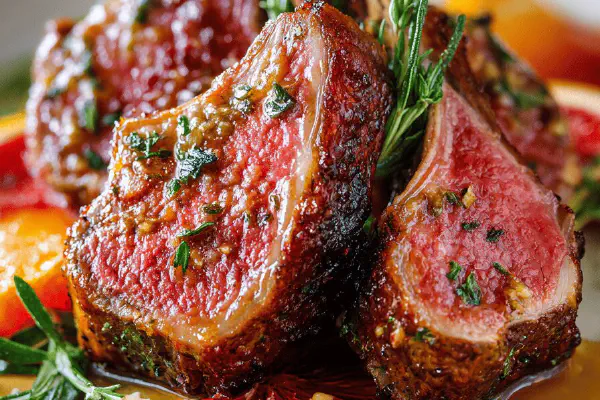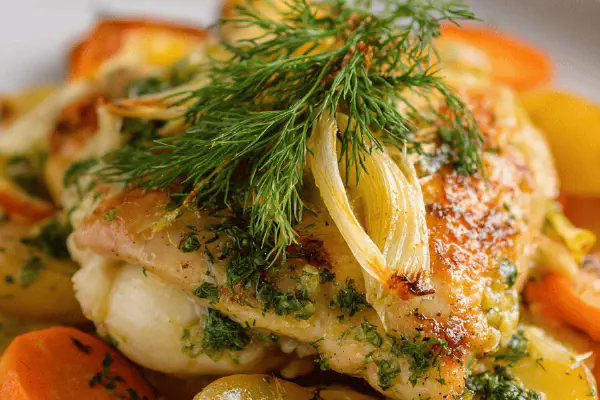White Wine Thyme Roast Chicken
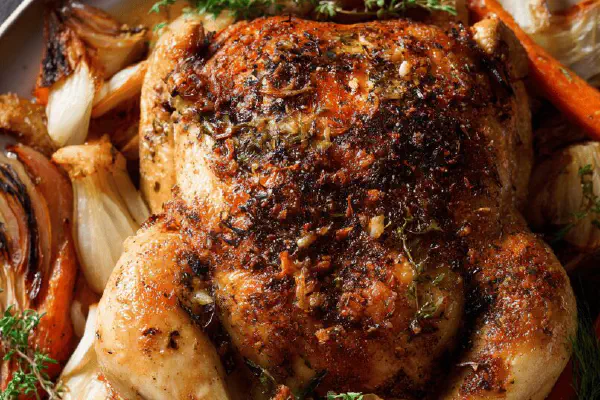
By Emma
Certified Culinary Professional
Ingredients
- 1 whole chicken 1.45 to 1.75 kg
- Brine: 110 ml (a bit less than 1/2 cup) table salt
- Brine: 20 ml (1 1/3 tablespoons) maple syrup or honey
- 2 carrots cut into chunky pieces
- 2 bulbs fennel trimmed, quartered (sub for celery)
- 1 medium onion cut in quarters
- Thyme sprigs, about 1 teaspoon loosely packed leaves
- Pepper freshly ground
- 400 ml (approx 1 2/3 cup) robust homemade or store-bought chicken stock
- 125 ml (1/2 cup) dry white wine
- Butter 30 g for basting and finishing
About the ingredients
Method
Brining Stage
- Dissolve 110 ml salt and 20 ml maple syrup in 2 liters cold water; stir until salt mostly gone. Submerge whole chicken, breast side down - better coverage this way. Refrigerate for 50 to 65 minutes. Remove, pat very dry with kitchen towels. Pro tip: for crunchier skin, after drying, place uncovered on a rack in fridge 2-4 hours before roasting. Skin drying is non-negotiable.
Roasting Preparation
- Scatter carrot chunks and fennel quarters plus onion quarters evenly in bottom of roasting pan; rough roughly chopped vegetables release aromatics and keep sugars from burning. Tip: add ~5 mm water to pan base, just enough to keep fond from scorching but not stewing the veggies.
- Lightly oil the roasting rack. Smear chicken all over with melted butter - plenty here, don't be shy - and crack pepper on both sides. No salt now; brine's doing the work.
- Place chicken breast side up on the rack over veggies.
Cooking Method
- Start in oven preheated to 160°C (320°F). Roast 25 minutes. Skin begins to set; aroma of browning fat noticeable.
- Raise oven temperature to 240°C (470°F). Roast an additional 28-30 minutes. Watch skin closely; butter and rendered fat should bubble and crisp without burning. If skin looks like it’s drying too fast, tent loosely with foil.
- Remove chicken, lift with tongs to drain cavity juices back into pan evenly.
- Turn chicken breast-side down to crisp underside further. Back in oven 12 to 18 minutes. Look for deep golden skin, not charred. Legs’ joints loosen, juices run clear, temp near 75°C (165°F) in thickest part. Visual and tactile cues trump timer. Touch feels springy but taut.
- Remove pan from oven; drain excess liquid from roasted veggies and chicken drippings carefully, keep all browned bits. Transfer chicken to resting spot, breast side up, cover loosely with foil. Let sit 6-8 minutes minimum. Rest allows juices to redistribute, avoids dry meat.
Sauce Assembly
- Discard or keep roasted veggies if you like – if caramelized dark, bitter; toss or serve as rustic side after trimming burnt parts anyway.
- Pour off excess fat from pan, leaving brown bits and some juices.
- Pour 125 ml dry white wine into pan. Scrape bottom well with spatula to lift fond, sizzle audible and aromatic. Wine hits pan fond - sharp tang cuts richness.
- Add 400 ml chicken broth and thyme. Season lightly with freshly ground pepper only now. Bring to vigorous simmer over medium heat on stovetop.
- Reduce liquid by roughly half, about 8-10 minutes. Sauce thickens, coats spoon lightly.
- Optional: strain sauce through fine sieve for clarity and smooth texture.
- Add 25-30 g cold butter cubes off heat. Whisk gently to emulsify. Gives sauce silk and shine. Season to taste. Skip salt or add cautiously since chicken brined.
Serving
- Carve chicken on warmed plate. Spoon warm sauce alongside or drizzle lightly. Serve immediately to keep skin crisp.
- Try leftover sauce for sautéed mushrooms or drizzled on veggies next day.
- Note: If time crunched, brining can be skipped but salt skin well and dry extensively - result less juicy but skin still crispable.
- Wine sub: dry vermouth or white grape juice with splash of white vinegar if out of wine.
- Fennel swap for celery adds subtle licorice hint; celery’s crunch won’t show here anyway after roasting.
Cooking tips
Chef's notes
- 💡 Salt dissolves fully first. Stir brine well till no grainy bits remain cause salt picks unevenly otherwise. Submerge bird breast down helps salt reach whole skin, especially underside. Pat dry like crazy or skin steams and stays limp. Dry uncovered in fridge if you can. Hours not minutes. Skin dull when wet, crisp after dry.
- 💡 Roast veggies cut chunky for aroma and natural sugars; don’t drown with water or veg stew. Just a thin shim of water to keep fond safe. Fond smells nutty, brown but no bitter burnt parts. Don’t stir veg or they’ll mush. Keep veggies loose under chicken, catch drips, build complexity.
- 💡 Butter heavily on skin pre-roast. Smear over like paint, melting fat makes brown crisp. Pepper after, no salt since brine did job. Oven start low, 160°C slow cooks breast, prevents dryness. Listen for fat crackle and watch skin set before ramp up heat. Timing is smell, color, crackling sounds not strict minutes.
- 💡 Flip bird halfway for underside crisp. Most skip but skin there usually mushy. 12-18 minutes breast down works wonders. Watch skin color deepens to golden, not black. Legs jiggle and joints loosen signal done more than thermometer. Temp about 75°C thickest part but sensory cues rule. Rest bird covered loosely; juices redistribute, cuts dryness.
- 💡 Sauce made by deglazing pan with dry white wine tapping fond aroma. Scrape hard to lift every brown bit. Then add chicken stock and thyme, pepper now for balance. Reduce by half til coats spoon lightly. Cold butter off heat emulsifies silky shine. Strain optional: smooth sauce or rustic texture, your call. Skip salt unless really needed.
Common questions
Why brine chicken briefly?
Locks moisture in muscle but too long means salty. About hour works. Shorter no salt penetration enough. I adjust timing by size, fridge temp. Important to dry skin after or steaming ruins crispness.
What if no white wine available?
Substitute dry vermouth, or white grape juice plus small vinegar splash. Adds acidity sharpness, not sweet. Avoid sweet wines or sauce turns cloying. Vodka can be used but loses wine complexity.
How to tell when chicken fully cooked?
Visual cues best. Skin deep golden, not burnt. Legs wiggle loose. Juices run clear. Press fleshy parts: springy but taut, not soft or mush. Thermometer 75°C thickest part if unsure but trust touch and look more.
Can leftovers be stored and reused?
Yes cool sauce fast, strain well. Store chicken loosely covered fridge max 2 days. Reheat gently not to dry meat. Sauce thickens in fridge, loosen with splash stock or water. Veggies can be tossed or saved for rustic sides.
